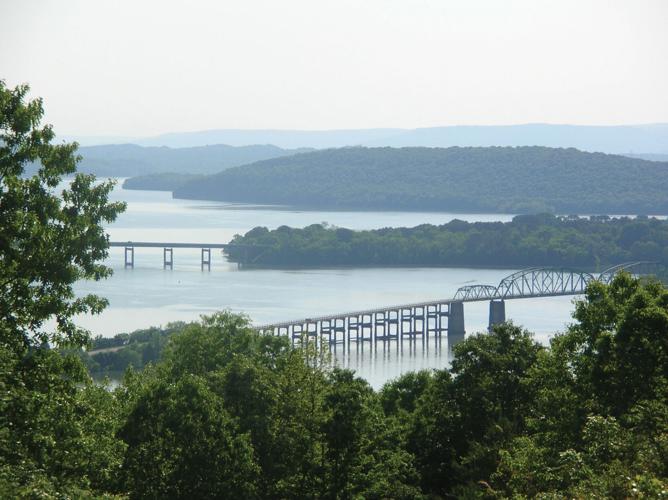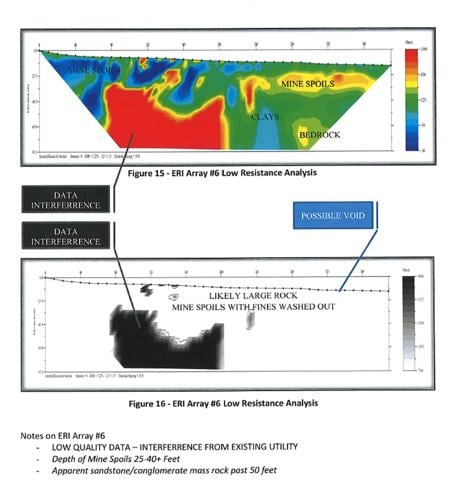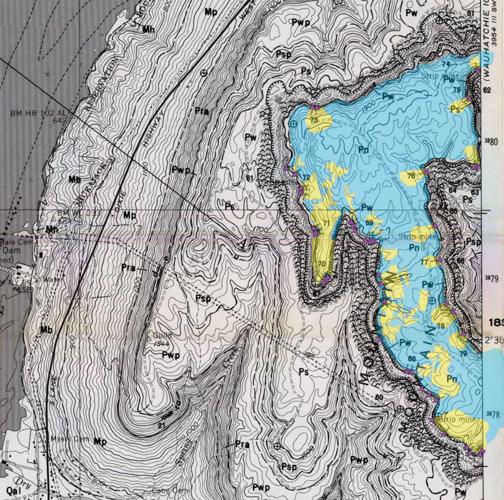See also: “Thunder on the Mountain, Part 1.”
Typhon, the fiercest of Greek monsters, nearly beat Zeus in an epic battle for control of the cosmos. One-hundred dragon heads sprouted from Typhon’s arms; his legs were a tangle of snakes; fire flew from his eyes. The exhausted Zeus prevailed only by flinging Mount Aetna on top of Typhon, which explains why fire erupts from its rocky surface today.
The Sicilian volcano is now spelled “Etna,” but its namesake peak west of Chattanooga kept the Latin “Aetna.” Its flames spring not from a volcano or the eyes of a defeated god, but from another kind of myth: a buried coal fire that may have smoldered underground for decades. Or maybe not. Roughly a half-dozen hunters, hikers and forestry officials have reported feeling unexplained heat, smelling fumes and even seeing flames shoot from the ground at various times in the past decade. One claimed the soles of his tennis shoes melted as he crossed a hot zone.
But none of these witnesses will go on the record with what they’ve seen. They fear the wrath of John “Thunder” Thornton, a Zeus-like figure in the world of mountain real estate. Thornton’s ambitious River Gorge Ranch (RGR) is scheduled to hold 2,500 homesites — with more than 300 on the 7,400-acre development already sold. The higher-priced lots offer spectacular bluff views from the top of Aetna, with the Tennessee River winding around three of its sides.
An East Tennessee development is moving forward on what locals call a ‘Swiss cheese’ of abandoned coal mines
As was revealed at the Marion County Commission meeting Feb. 26, much of the development sits above abandoned coal mines, some of which date back 150 years. Alongside the bluffs lie abandoned strip mines marked on a 1950 topographic map. In October 2022, an engineering firm called UES Professional Solutions performed a “limited geophysical exploration” of the site for Phase 1 of RGR — about 370 lots. The test was performed at the northeast corner of the development to “assess whether any potential subsidence risk is present due to previous strip-mining operations.”
Subsidence is the settling of soil from collapses below. While historical maps showed about 30 “adits,” or horizontal mine entrances, within the proposed development, these appeared to have been mostly buried or otherwise obscured when the engineering team searched for them. They focused on the strip mines. Using electrical resistance to build an underground model at eight spots in the test zone (a ninth location failed to provide useful information), the firm determined that soils in the strip-mined area consist of clays, mining spoils and “cap rock.”
That last item is the Newton Sandstone, which sits above the coal seams and underlying sedimentary deposits like icing on a layer cake. Within the limited search area, the report estimated that the Newton formation averaged 120 feet thick. Even though one of the eight measurements indicated large voids within the rock, the report concluded that the “highest elevation residential lots” would generally sit over such a thick sandstone layer that they did not see “any increased risk of subsidence.” The report added that mining spoils — overlying material removed during mine operations — in three lots of the test area would need extensive remediation or to be “abandoned” for residential development.

A cautionary note ended the generally development-friendly report: “However, mass grading and/or extensive blasting in the sandstone formations would likely increase the risk of future distress related to any underlying mines.” This could be a problem, as many mountain homes in Tennessee, including those planned for RGR, lie too far away and at too great an elevation to connect to municipal sewage, meaning they need septic systems.
Sandstone is relatively impermeable, which is why the soft limestone around it erodes into picturesque bluffs.
“If soils are thick enough, which is questionable on sandstone, and if septic drainfields are appropriately spaced with appropriate soils, then the impacts could be minimal,” says Wil Orndorff, a nationally known soil scientist who tells the Scene via email that he believes the geophysics report of the site “is solid.”
But when soils are thin, heavy rain can make a septic drainage field bubble unpleasantly to the surface. While each lot will need its own percolation test, as a whole, RGR sought initial approval for 3,000 septic systems in the development.
Twenty years ago, persistent septic system failure in Spencer — a town built on similar sandstone just outside Fall Creek Falls State Park — led to an expensive new sewage system that nearly destroyed a delicate hidden ecosystem.
While the sandstone cap has proved to be a solid roof for millennia, the flanks tend to slip and slide. As elsewhere in the region, the area around Aetna is known for occasional rockfall and landslides, including one that shut down Highway 41 in 2019. Old mines are known to help precipitate such events.

The blue sections indicate the major coal seams on the mountain. The small yellow shapes around the edges represent coal mine outlines.
Even more important than septic systems for homes at the top is water, which can be difficult to haul up a mountain. Thornton’s company Thornton Air was sued by the state in 2020 for water misdeeds in his earlier mountain development, Jasper Highlands. By all counts, water will be even harder to get to River Gorge Ranch. In the earlier dispute, Thornton proved more than willing to go after property owners who made waves.
On Feb. 5, the TDEC Water Resources Division approved an engineering plan for a 1-million-gallon water tank to be built at the highest point above RGR to provide community water service, to be delivered by Tennessee American Water. There are only a few small glitches in the plan.
Assuming all goes well with the building of the tower, the running of pipe from a smaller water tower on the mountain’s flank, and a final deal over the cost of that water, the taps in River Gorge Ranch might begin to run within a period of a few years, rather than the months eager homebuilders might prefer.
At the Feb. 26 Marion County Commission meeting, Commissioner Paul Schafer introduced the discussion of Aetna mines. He also brought up sandstone and the difficulty of installing septic tanks in it — especially above mine shafts and tunnels.
“When septic systems are installed, both the pounding to remove rock … and overflow from these systems could make this mountain unstable,” Schafer said in the meeting. “Why weren’t these issues brought up before the planning commission?”
Mayor David Jackson and Commissioner Gene Hargis (who is also a detective with the Marion County Sheriff’s Department) both sit on the planning commission as well as the county commission, but they offered no answer. Shortly after the next planning commission meeting March 12, Thornton attorney Harold North served Schafer with a Tennessee Freedom of Information Act request. The letter asked for all communications between Schafer and Ronnie Kennedy, who had introduced the mine maps at the Feb. 26 meeting, and Joey Blevins, a local four-wheel-drive enthusiast who created a Facebook group called Aetna Nation, generally in favor of recreation over development on Aetna.
The next day (also the day Part 1 of this Scene series was published online), RGR sent out emails and social media posts to lot owners, citing the engineering report as reason not to worry. Their social posts generally blamed the mine talk on two disgruntled people with no connection to RGR, one of whom is against the development because he missed trespassing for his off-road adventures there. As the FOIA request made clear, the designated scapegoats are Kennedy and Blevins.
“Luckily, I’m dyslexic,” Schafer said on March 14. “I don’t have any texts or emails. I just talk to people and listen to what they say. From that you can learn an awful lot.”
The next day, North cast a wider net, sending the same FOIA request to two more commissioners, the county mayor, the county attorney and the county road superintendent.
While some RGR lot owners appeared satisfied by Thornton’s response, others worry about the safety of their investment. Several have scheduled a group meeting with an attorney to discuss possible legal options. At least two potential buyers said they had reconsidered after reading the Scene article. One source asked this reporter, “Have you got your bulletproof vest yet?”
He might not have been joking. Much is at stake on Mount Aetna, and as at the mountain of ancient myth, mighty battles may remain.






